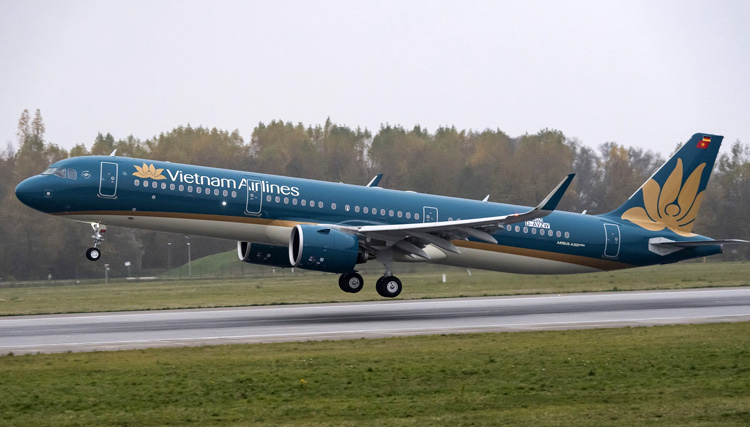Vietnam Airlines takes delivery of first Airbus A321neo aircraft powered by Pratt & Whitney GTF™ engines

Pratt & Whitney, a division of United Technologies Corp. and Vietnam Airlines celebrated delivery of the airline's first Airbus A321neo aircraft powered by Pratt & Whitney GTF™ engines. Vietnam Airlines is leasing the aircraft from Aviation Capital Group (ACG). The airline announced selection of the GTF engine to power 20 A321neo aircraft in November 2017. The delivery was celebrated at a ceremony in Hamburg, Germany with Vietnam Airlines, Airbus, ACG and Pratt & Whitney officials in attendance.
"Vietnam Airlines appreciates Airbus A321neo for its exceptional operational performance with new engine and technology saving up to 20 percent fuel burn," said Duong Trí Thành, president and CEO at Vietnam Airlines. "We are confident that the Airbus A321neo fleet, powered by Pratt & Whitney GTF engines, will further deliver the highest level of passenger comfort on our growing domestic and regional routes in Vietnam and Asia."
Pratt & Whitney and Vietnam Airlines share a long history dating back to the early 1990s when the airline received its first PW4000-powered 767. Today, the airline's fleet consists of 57 V2500®-powered A320ceo aircraft and 2 PW4170-powered A330 aircraft. With the addition of the A321neo aircraft, Vietnam Airlines plans to continue their growth in the region.
"New aircraft deliveries are a special milestone, and we are elated to see Vietnam Airlines take delivery of their first A321neo," said Rick Deurloo, senior vice president of sales, marketing and customer support at Pratt & Whitney. "Vietnam Airlines' transition to industry-leading GTF technology is a significant testament of their commitment to growth in the region, with environmental consciousness at top of mind."
Since entering into service in early 2016, the GTF engine has demonstrated its promised ability to reduce fuel burn by 16 percent, to reduce NOx emissions by 50 percent to the regulatory standard and to lower the noise footprint by 75 percent.





